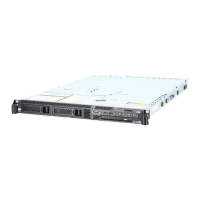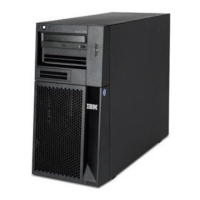v The cache card of the I/O card was not cleared before it was shipped as a MES
to the customer. In addition, the service representative moved devices from the
I/O card to a different I/O card before performing a system IPL.
v The cache card of the I/O card was not cleared before it was shipped to the
customer. In addition, residual data was left in the cache card for disk units that
manufacturing used to test the I/O card.
v The I/O card and cache card were moved from a different system or a different
location on this system after an abnormal power off.
v One or more disk units were moved either concurrently, or they were removed
after an abnormal power off.
Note: Any Function 08 power down (including from a D-IPL) is an Abnormal
power off!
Perform the following:
1. Display the Product Activity Log entry for URC 9051 by performing one of the
following:
v If you can enter a command at the console, access system service tools (SST)
(see ″System Service Tools (SST)″ in the iSeries Service Functions information).
Select the Product Activity Log option and display the Product Activity Log
entry for this SRC. Press the F9 key for address information in the Product
Activity Log entry for this SRC. This is the I/O card address.
v If you cannot perform a type A or B IPL, perform a type D IPL from
removable media. Select the Product Activity Log option and display the
Product Activity Log for this SRC. The direct select address (DSA) of the I/O
card is in the format BBBB-Cc-bb:
– BBBB = hexadecimal offsets 4C and 4D.
– Cc = hexadecimal offset 51.
– bb = hexadecimal offset 4F.
The unit address of the I/O card is hexadecimal offset 18C through 18F.
For a type A or B IPL, view the ″Additional Information″ to see the
formatted log information. For a type D IPL, see ″More Information from
Hexadecimal Reports″ in the iSeries Service Functions.
Record the device types and serial numbers for those devices that show a
unit address of 0000 0000.
Note: There may be multiple displays of data. Ensure that you check all
displays that are associated with the error.
See “Locations and Addresses” on page 705 and find the diagram of the
system unit, or the expansion unit. Find the card slot that is identified by the
I/O card direct select address (DSA) and unit address. If there is no IOA
with a matching DSA and unit address, the IOP and IOA are one card. Use
the IOP with the same DSA.
2. If the devices from step 1 of this procedure have never been installed on this
system, go to step 3 of this procedure. If the devices are not in the current
system disk configuration, go to step 5 of this procedure. Otherwise, the
devices are part of the system disk configuration; go to step 7 of this procedure.
3. If this I/O card and cache card were moved from a different system, go to step
4 of this procedure. Otherwise, the cache card was shipped to the customer
without first being cleared. Make a note of both the serial number and the
SDIOP PIPs
430
iSeries Model 830, 840, SB2, and SB3 Problem Analysis, Repair and Parts V5R1

